Get Rid of Black Spots on Hydrangea Leaves
Can't stand black spots on hydrangeas? Neither can I! I'm sharing the causes and solutions, plus why I ultimately decided to toss out my own mophead bigleaf hydrangeas!
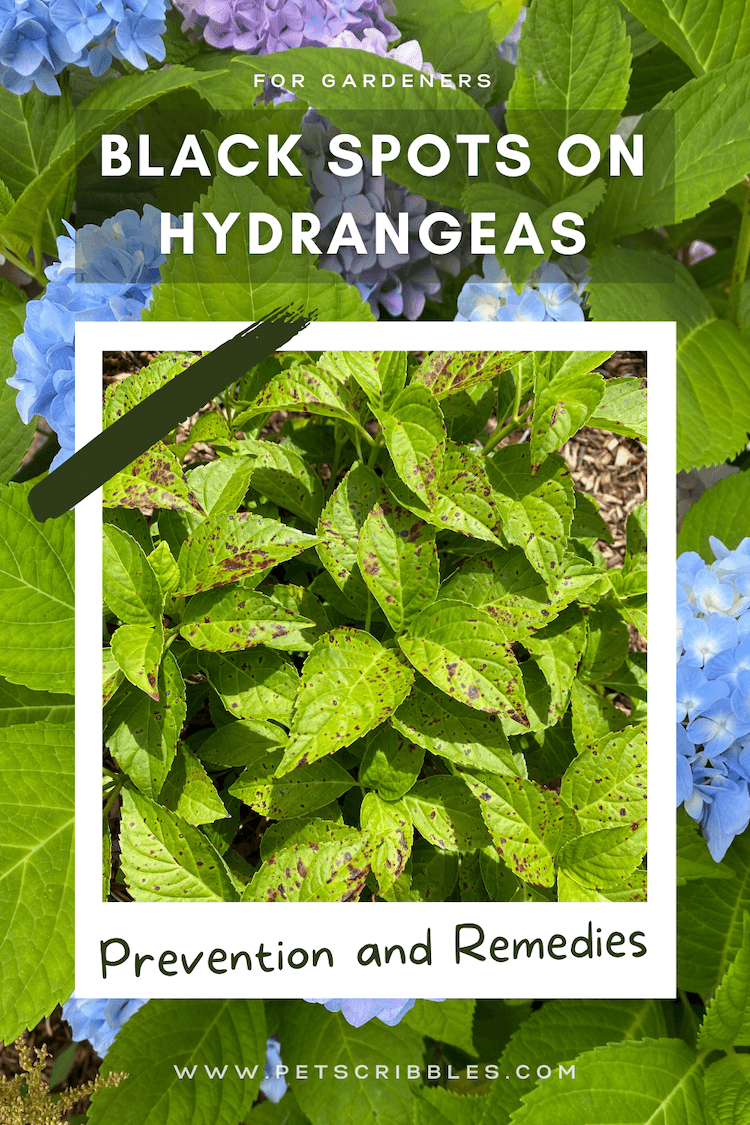
My love of mophead bigleaf hydrangeas!
Ever since I can remember, I've adored the deep blue color of hydrangeas that I would see on Cape Cod, Massachusetts and in Newport and Nantucket, Rhode Island. (I used to live in New England and was lucky to visit those places a lot over the years.)
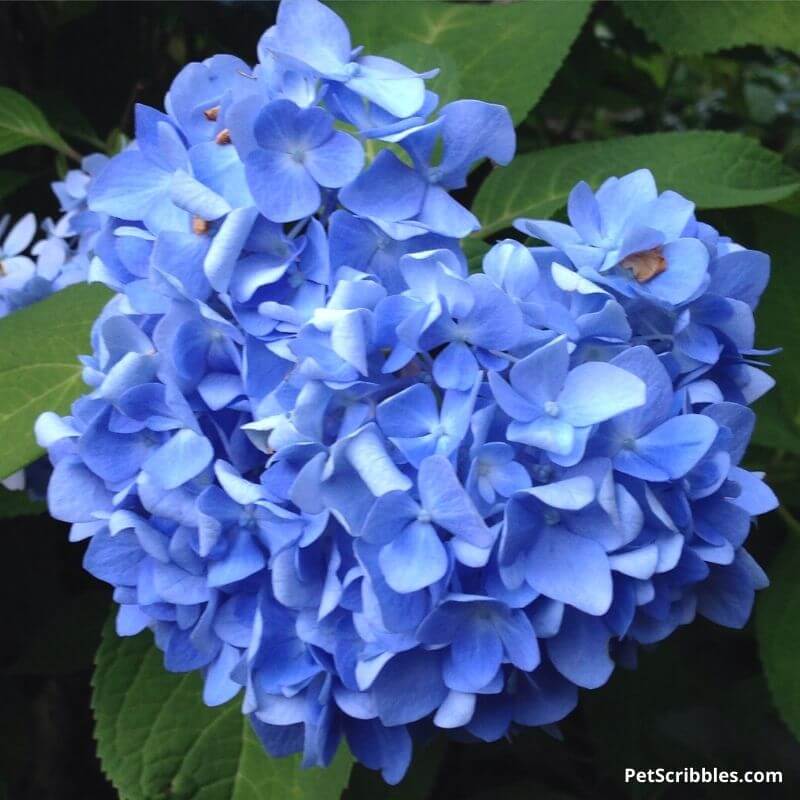
When we moved to our home in southern New Jersey, I planted two Endless Summer hydrangeas which did great for us, mainly because they were planted in a sunny location that also retained a ton of water. The garden was also in a windy location, so daily good air circulation was built in naturally.
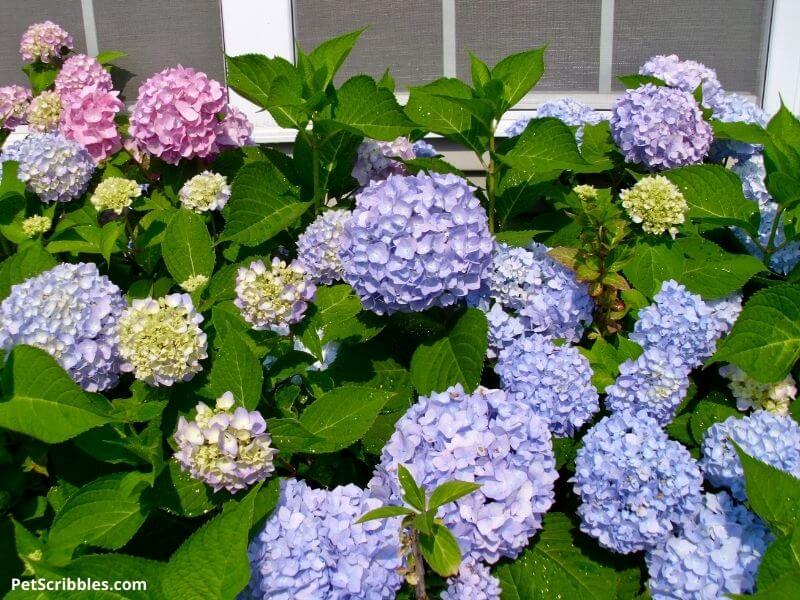
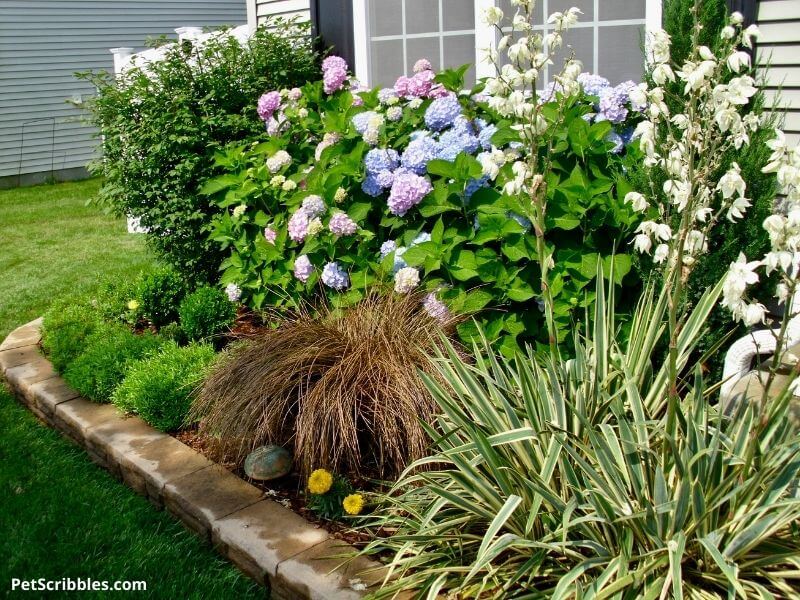
When we redid our landscaping, we didn't keep those hydrangeas — don't ask me why as I'm shaking my head not understanding why myself.
Instead, I asked the landscapers for Pinky Winky hydrangeas (love them), Little Lime Hydrangeas (love them), bigleaf hydrangeas and two dwarf mophead hydrangeas (Pia hydrangeas).
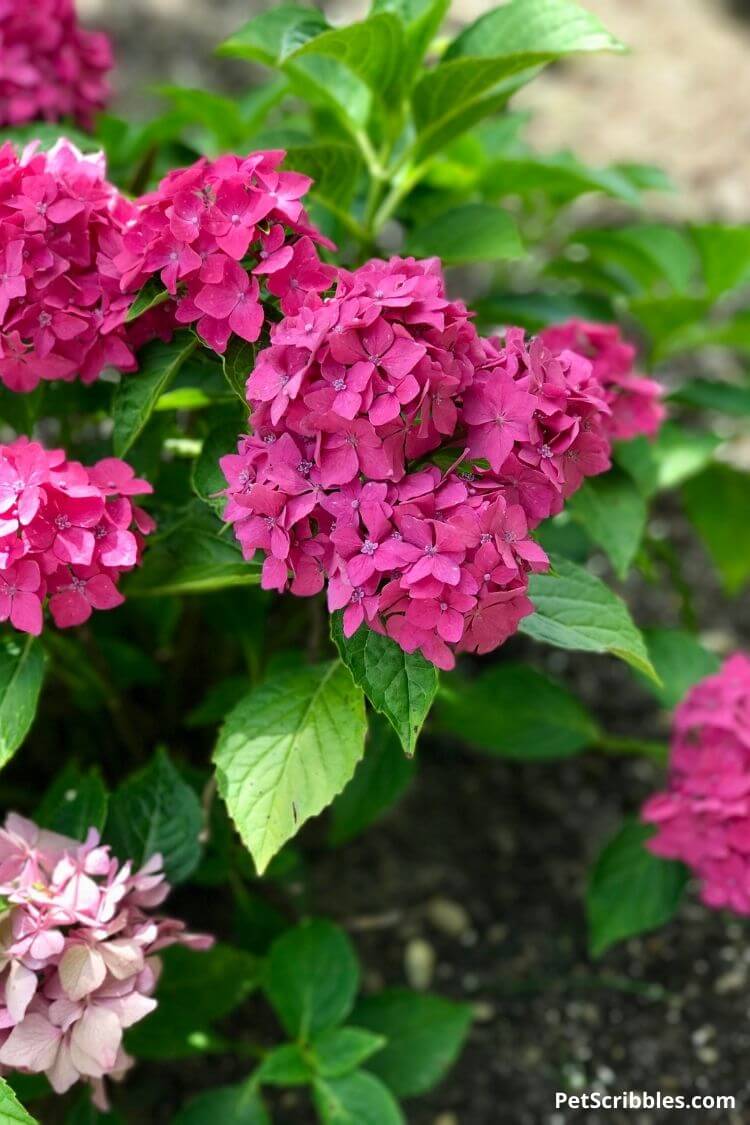
The bigleaf hydrangeas arrived without a name, and I didn't press the issue. They were a pink rose color, almost identical to the Pia hydrangea color. I planned to change the color to blue using a soil acidifier.
Here's the short version:
The bigleaf hydrangeas weren't placed properly when first planted — my fault for thinking these particular landscapers knew more than I did. So they quickly overtook their spots within a few years — even the dwarf ones.
Disclaimer: I'm a huge fan of true landscapers and landscape designers. Huge! I'm not a fan of landscapers who might say they know about plants but actually don't. There's a reason some landscapers are much cheaper than others. Do your research and get references.
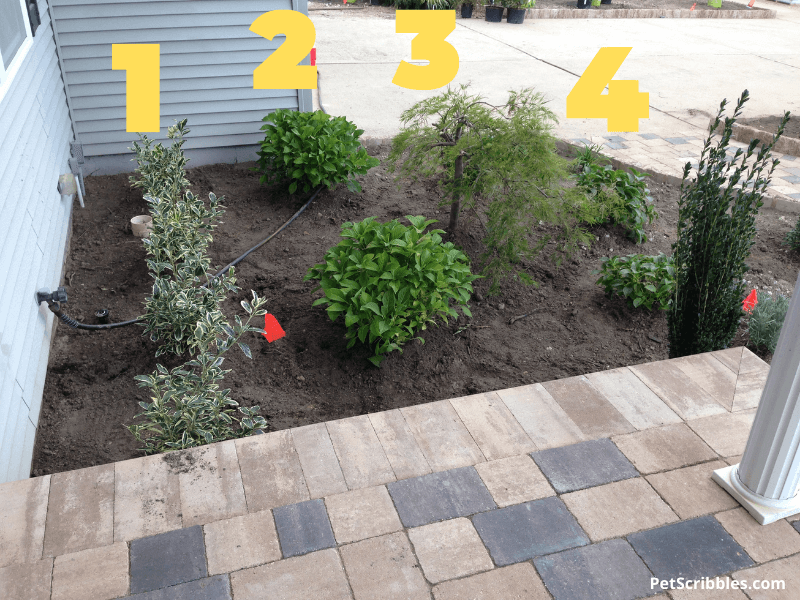
The image above is the newly planted foundation garden (2014). Here's what you see:
1 = Silver King Euonymus shrubs, which will form a hedge underneath our windows
2 = large unnamed mophead hydrangeas planted in between the hedge and an ornamental tree
3 = an ornamental maple tree
4 = Pia dwarf hydrangeas planted just in front of an ornamental tree
In addition to these bigleaf hydrangeas needing to be transplanted due to the overcrowding, they also were suffering from black spot.
Look at the overcrowding at the back of this bed, below:
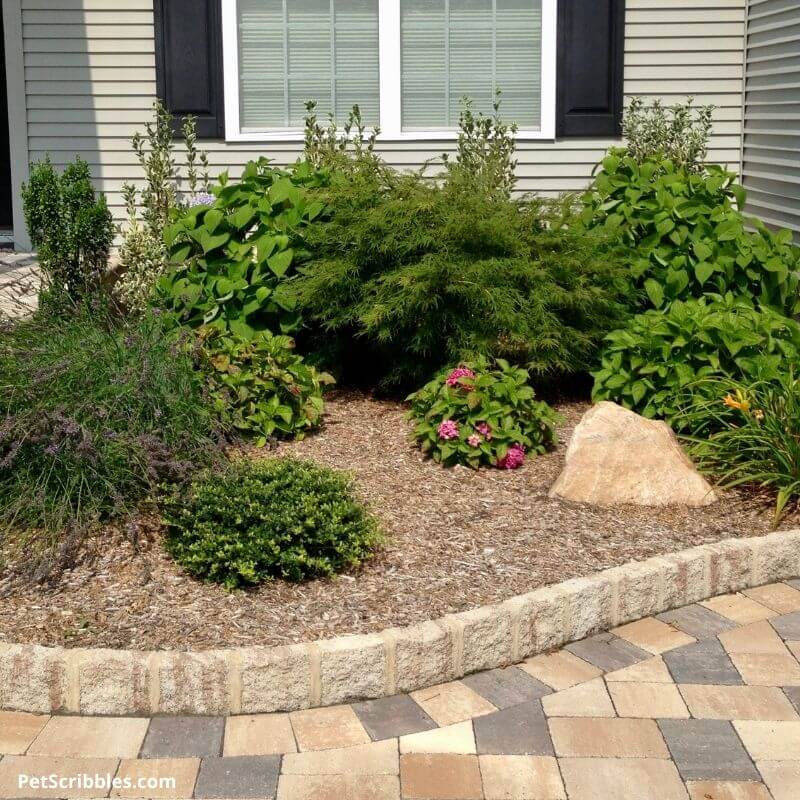
These dwarf hydrangeas were fighting with the ornamental maple tree for space:
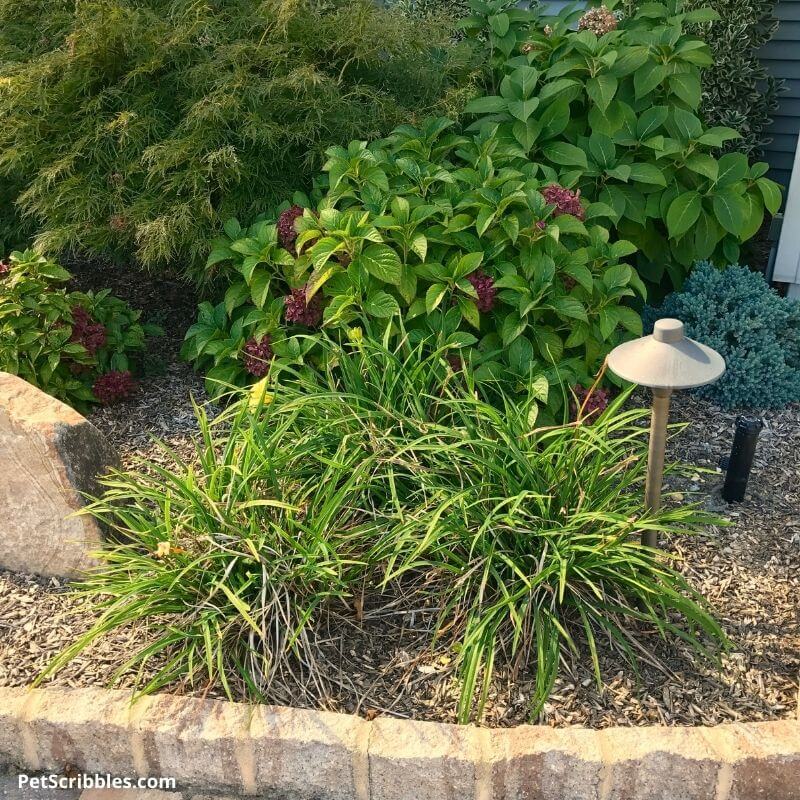
After a few years, we transplanted the five hydrangeas into our back yard garden and hoped for the best.
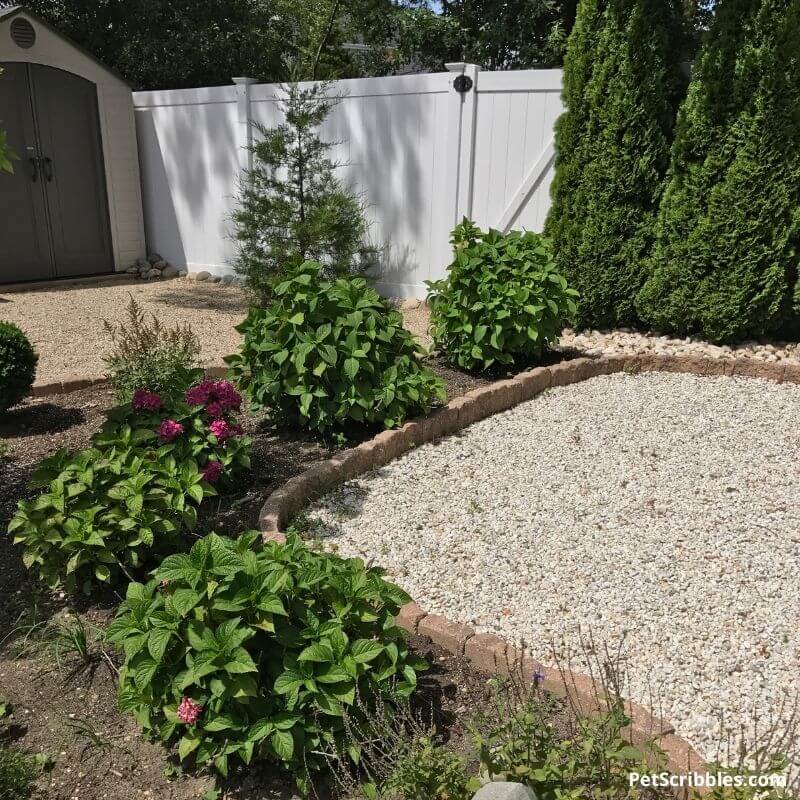
Are black spots on hydrangeas bad?
There are two diseases that can infect hydrangeas and cause these black spots. Dumbing it down for myself — and for you — here is the bare minimum you need to know.
First, there are several reasons we see black spots on hydrangea leaves:
- not enough air circulation between plants
- branches/stems too close together, especially near the base of the plant
- humidity
- overhead sprinklers
- lots of rain
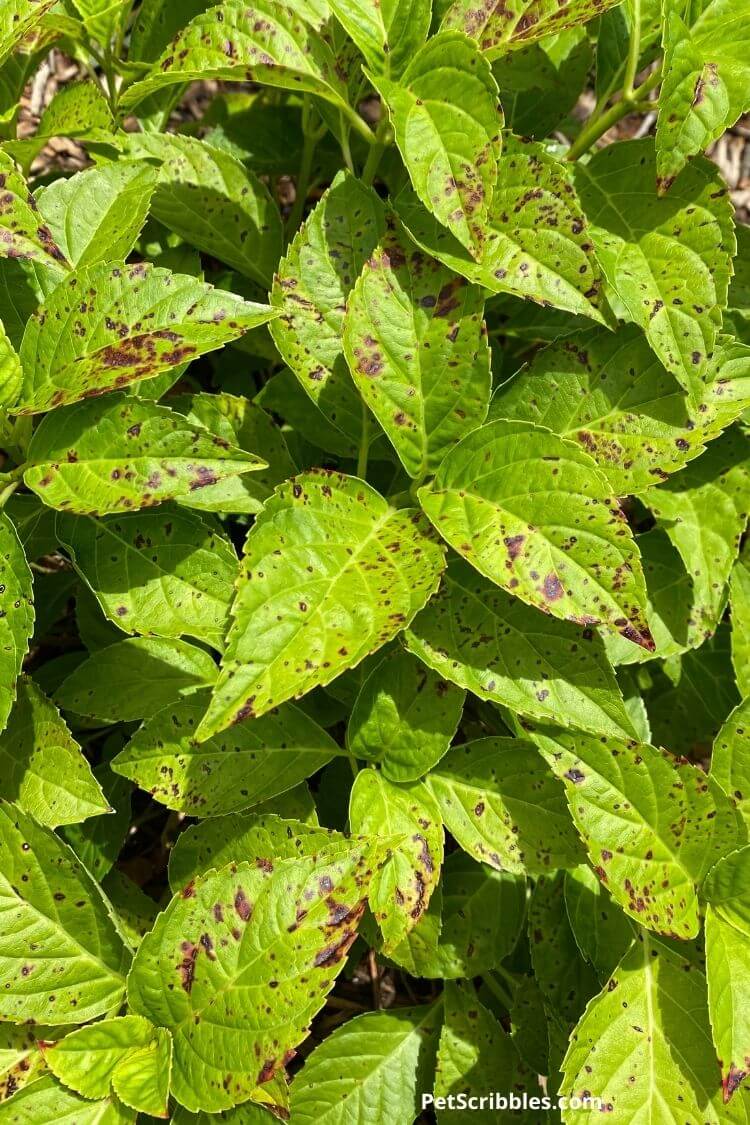
Second, these "black spots" on the leaves of hydrangeas are primarily caused by wet and/or humid conditions.
The two diseases responsible are:
- Cercospora Leaf Spot (pronounced CIRCUS-SPORA)
- Anthracnose (pronounced AN-THRAK-NOES)
Yes, these black spots are bad, but there are remedies to get rid of them.
Next, a bit of background on these two diseases.
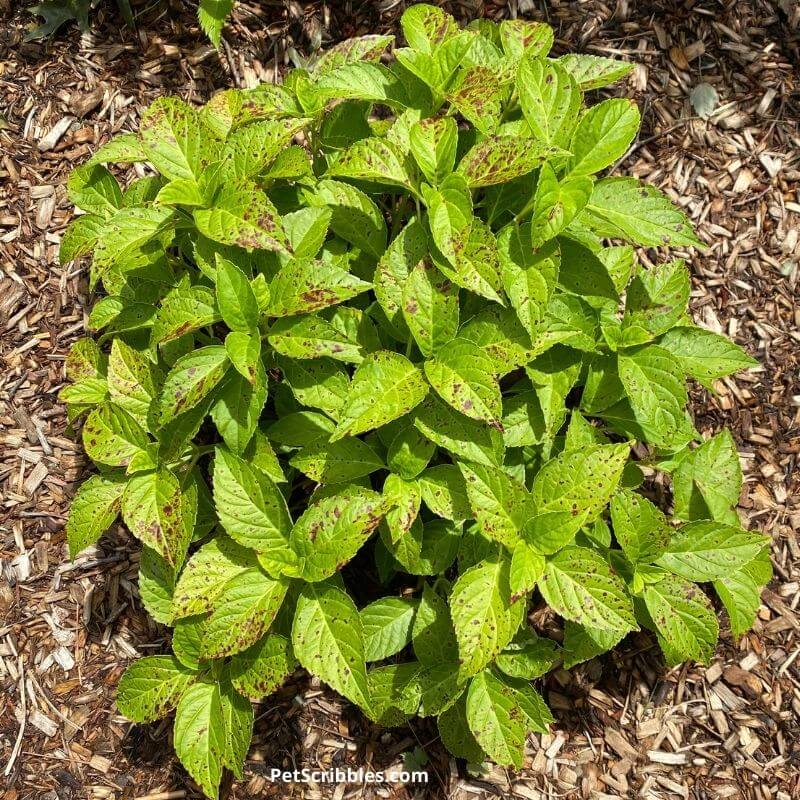
Cercospora Leaf Spot
Cercospora Leaf Spot happens when hydrangea leaves stay wet from either sprinklers or rain. This won't kill your hydrangeas but obviously the leaves look horrible and most likely will fall off the shrub. Your hydrangeas infected with this may have less flower buds (and flowers) during the blooming season too. Cercospora may begin in one part of the shrub and spread to other parts.
Anthracnose
This disease is a fungus due to hot, humid weather. The fungus attacks the leaves and flowers of hydrangeas, making the familiar looking black spots, and it happens all over the shrub at the same time, versus starting in one spot. Anthracnose can stick around in your garden debris during the Winter, so you may have to treat your hydrangeas the following season.
How do I know which disease my hydrangeas have?
Both diseases mentioned above have slight differences in what the "black spots" look like on the leaves. Since both diseases are treated the same way — by using a copper fungicide — it's more important to know how to treat the diseases versus which type of disease your hydrangeas have.
At least that's my opinion. I'm sure there will be experts who may disagree, but as a home gardener I think it's more important to know some general information and most important to know how to treat problems that crop up.
Helpful tip: There are plenty of images you can find doing a simple internet search showing examples of both diseases. In my opinion, I don't think it's crucial to know which one your hydrangeas have. Why? Because both are caused by wet and/or humid conditions and because the treatment solution is the same for both diseases.
Whether it is Cercospora or Anthracnose, the remedy is to treat the hydrangeas with a copper fungicide, usually in a spray form. I use Espoma Copper Soap, which you spray on the leaves. No matter which type of copper fungicide you use, follow package directions and know that you will have to stay on top of it!
Preventative measures to avoid getting black spots
There are several preventative measures you can take to help prevent black spot from taking over your hydrangeas.
- Thin out the stems your hydrangeas in early Spring, removing the oldest stems. Don't remove more than 1/3 of the stems. You can also remove stems just after flowering. This will increase air flow, helping leaves dry out easily.
- Don't over-fertilize your hydrangeas, as too much fertilizer can make them more susceptible to diseases. Use a slow-release organic fertilizer such as Espoma Holly-tone, rather than chemical-based fertilizers.
- Try to avoid using overhead sprinkler systems with your hydrangeas. Water them at the base of the plant, using a garden hose or drip hoses. If you have a sprinkler system, run it on sunny days in the morning so the sun has time to dry the water off the leaves during the day.
- Make sure to throw away any diseased leaves, stems, flowers that you remove from your hydrangeas. Don't add them to your compost pile.
- In late Fall, clean up any fallen leaves and debris surrounding your hydrangeas.
How to treat black spots on hydrangeas
So let's say that — your hydrangeas have black spots. Don't fret too much, but do get out there and try these remedies:
- Remove infected leaves. If you have just a handful of infected leaves, snip them off. If you have many infected leaves, you still need to remove them. It will take longer and may result in removing stems as well.
- Remove the oldest stems for air circulation. As mentioned earlier, removing stems will increase air flow and help leaves to dry out better. It's best to make this a regular part of your early Spring pruning, however you can also do this just after your hydrangeas have flowered. Make sure not to remove more than 1/3 of the stems.
- Use a fungicide. Treat the infected areas with a fungicide spray such as Copper Soap.
If you catch the infections early, then spraying can help eliminate the problem, along with removing infected leaves and creating more air flow among stems.
I got rid of my bigleaf, mophead hydrangeas!
This may sound extreme, but digging up and removing our mophead hydrangeas was indeed the last resort for me. And one that I don't regret. Here's why.
Although they started out fantastic every year . . .
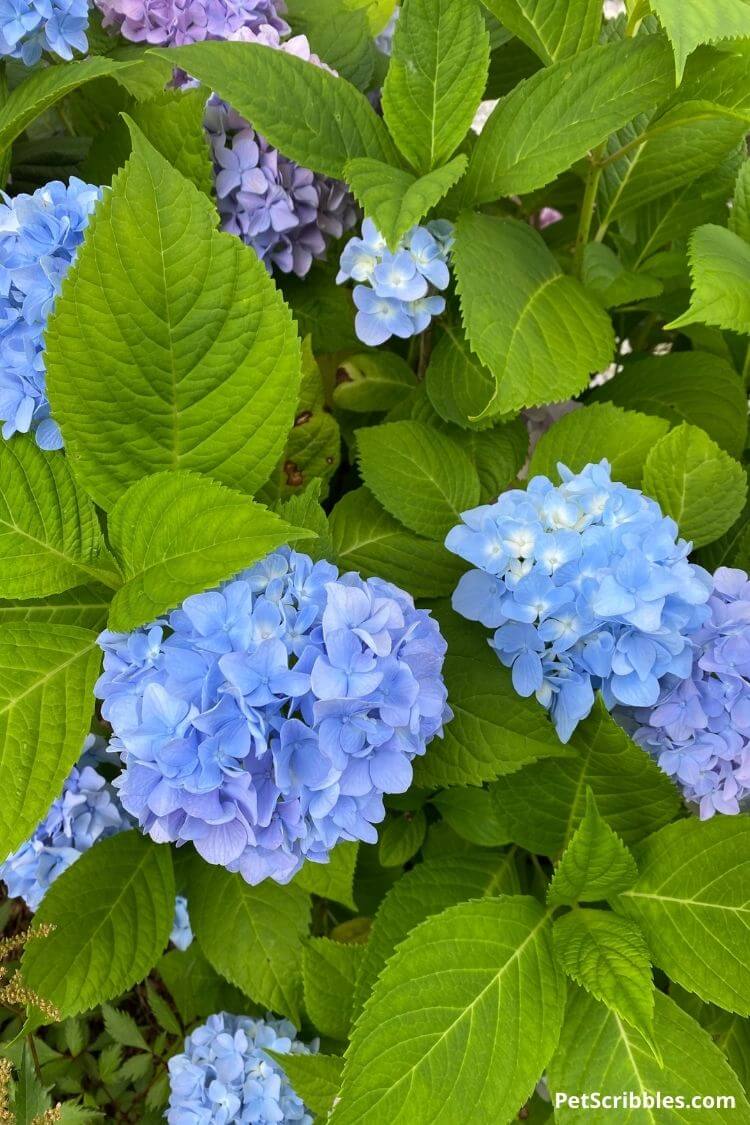
. . . they always ended up like this:
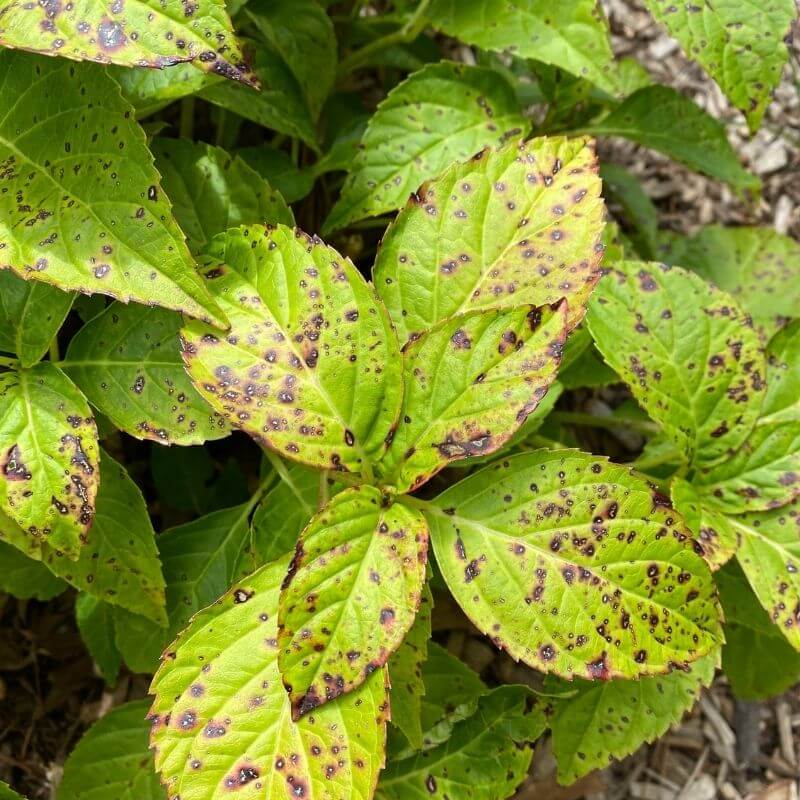
First, I spent the past three years constantly spraying them for black spot. I did all of the steps I mentioned above, but the second problem we faced is these hydrangeas need SO MUCH WATER all the time or they wilted. And I'm not talking about the slight wilting that occurs daily when the full sun hits overhead. We did an experiment, and watering at the base of the plant for long periods of time — much longer than our usual sprinklers run — was the only thing that worked. It was way too much water to use just to keep these looking pretty.
So, after three years of spraying them for black spot, trimming out the oldest stems, only watering from the base of the hydrangeas, plus their relentless need for water — I'd had enough. It was time to say goodbye.
This year, I replaced them with panicle hydrangeas — specifically two Little Quick Fire hydrangeas, which so far early in the season look adorable!
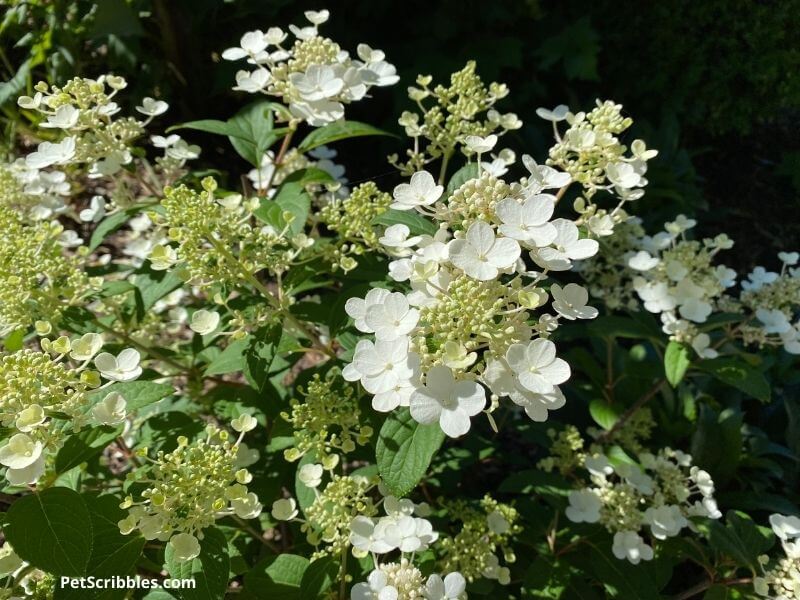
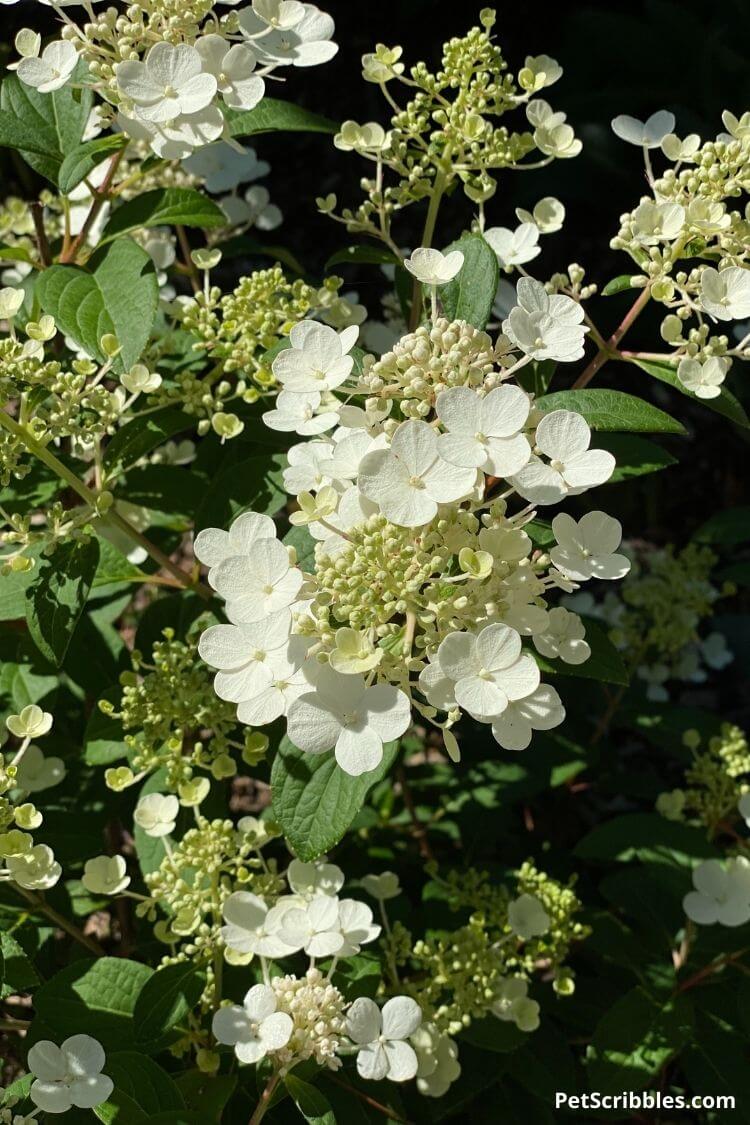
Are panicle hydrangeas better resistant to black spot?
Panicle hydrangeas are the hardiest of all hydrangeas species, so they are the easiest to grow and the most adaptable to different garden conditions. Panicle hydrangeas do great in hot and humid weather, and they also can survive Northern Winters. They are much stronger than mophead hydrangeas!
And for me? I much prefer enjoying hydrangeas that are happy in my gardens versus fighting with hydrangeas that are miserable. Miserable plants make for a miserable gardener. And we don't want that!
Video showing what happened
Below is a video showing you exactly what happened to our mophead hydrangeas — including the not-so-lovely black spots on hydrangeas — and how the newly planted Little Quick Fire hydrangeas are doing so far.
Gardening shouldn't be frustrating!
So there you have it. I tried. I did everything suggested to treat black spots on hydrangea leaves. But eventually I realized it was just too much work.
All of us garden because we enjoy it, right? We love flowers, we love to nurture plants, and we love to care for our gardens. Whether you have a little garden plot or several garden beds, remember that gardening should be soothing, fun, and satisfying.
Your case may be different, and I hope that the above solutions help you!
Happy gardening!
Learn more about my favorite hydrangeas!
Below are links to my articles on hydrangeas that I love! (And I still love Pia hydrangeas, even though they weren't happy in my gardens.)
Pia Hydrangea: A Pink Dwarf Hydrangea You'll Love!
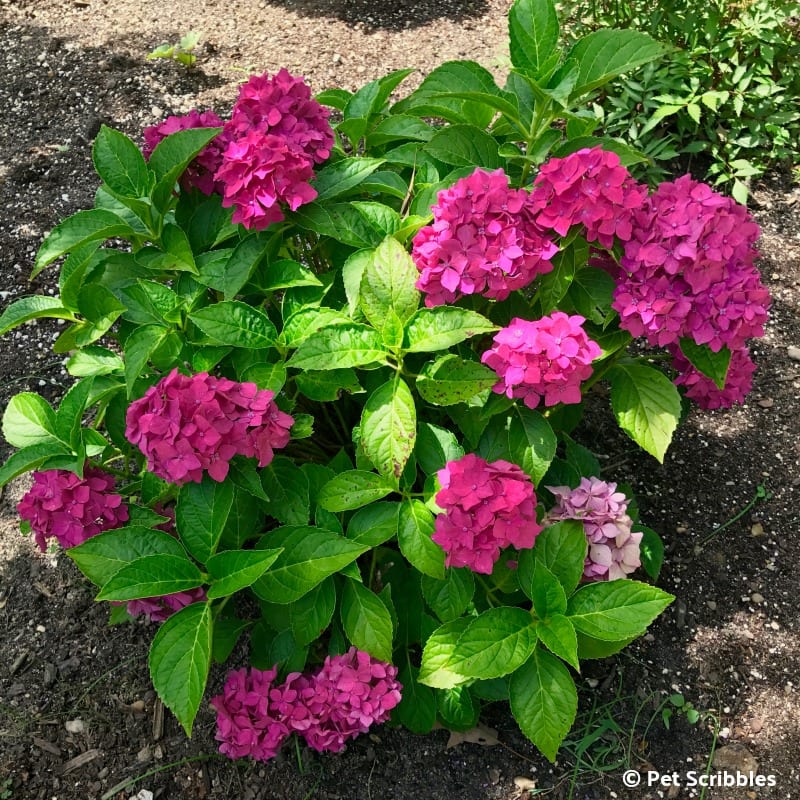
Little Lime Hydrangea — Your Ultimate Guide
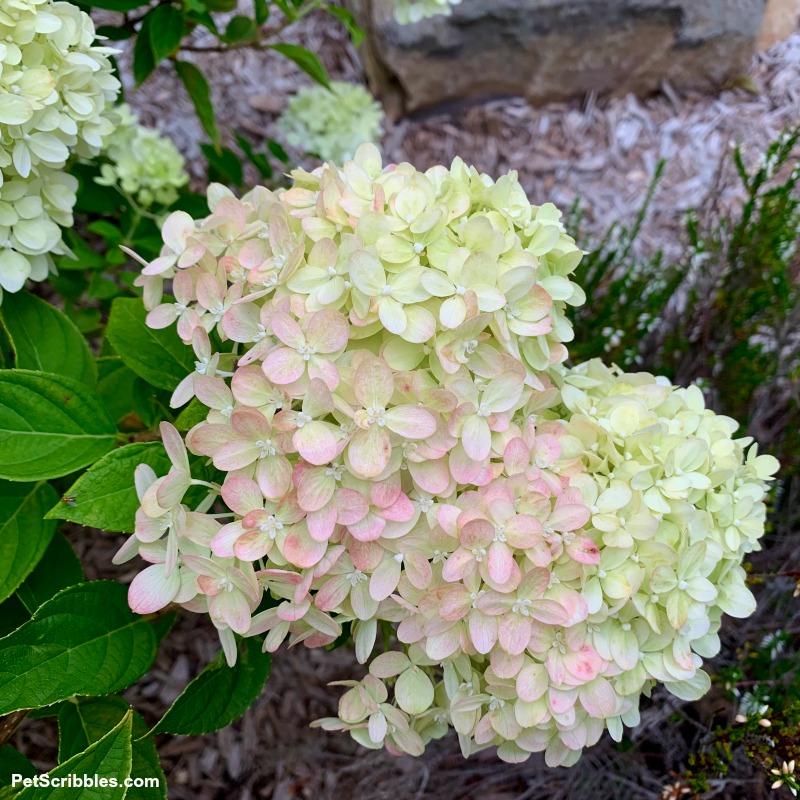
Pinky Winky Hydrangea Care — Your Ultimate Guide
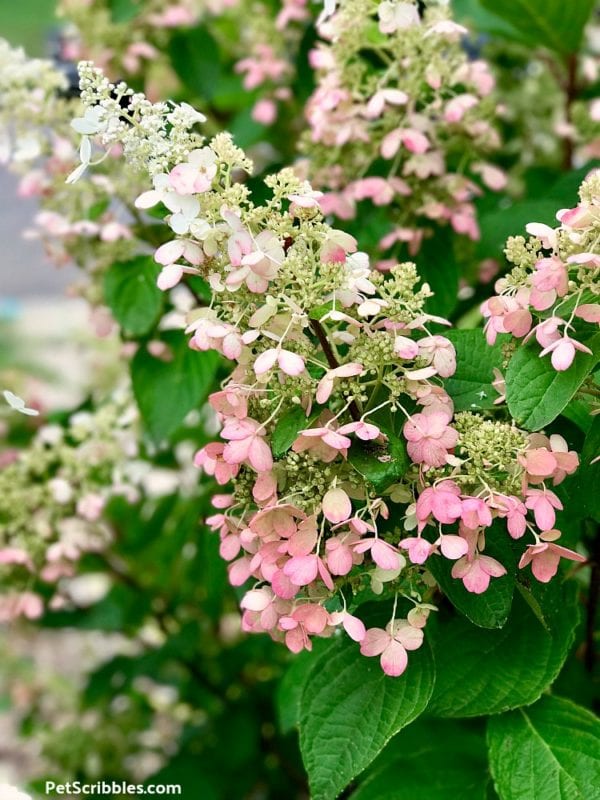
Reader Interactions
Get Rid of Black Spots on Hydrangea Leaves
Source: https://www.petscribbles.com/black-spots-on-hydrangeas-goodbye-for-good/